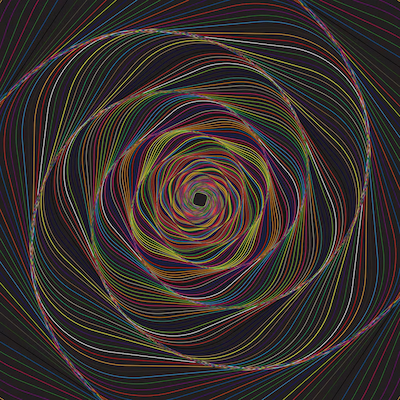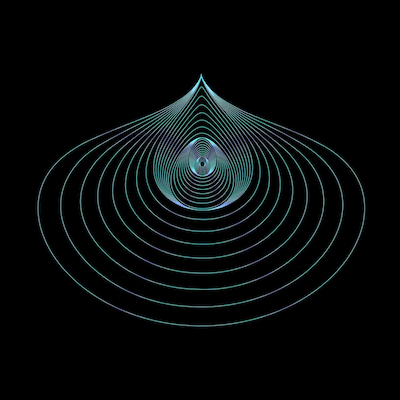
Cosmological gravitational waves represent one of the most fascinating and complex phenomena in modern physics. These are ripples in space-time that propagate as waves, produced by extremely energetic cosmic events such as black hole mergers or neutron star collisions. The detection of these waves not only validates the predictions of Albert Einstein’s General Theory of Relativity but also opens a new window into the universe, allowing scientists to investigate events previously invisible to traditional telescopes.
Studying cosmological gravitational waves is crucial to contemporary astrophysics, as they provide valuable information about the origin and evolution of the universe. Since their first detection in 2015, these waves have been the focus of intense research, leading to discoveries that challenge our current understanding of physics and cosmology. This article explores how cosmological gravitational waves work, the advantages of studying them, and the methods used to detect them—offering a comprehensive view of this intriguing subject.
How Do Cosmological Gravitational Waves Work?
Gravitational waves are generated by the accelerated motion of massive objects, which disturb the fabric of space-time. When a massive object, such as a black hole or neutron star, moves rapidly or collides with another object, it creates waves that propagate in all directions. These waves carry energy and information about the events that produced them, enabling scientists to analyze them and gain insights into the dynamics of the universe.
The mechanism behind cosmological gravitational waves is best understood through Einstein’s General Theory of Relativity, which describes gravity not as a force, but as the curvature of space-time caused by mass. When a massive body moves, it produces ripples in space-time, similar to waves on the surface of water. These ripples travel across the universe, and detecting them requires extraordinarily sensitive technology and scientific precision.
When gravitational waves pass through a detector like LIGO (Laser Interferometer Gravitational-Wave Observatory), they cause tiny variations in the distance between mirrors in the detector. These changes are measured with incredible accuracy, allowing scientists to identify the unique signature of different cosmic events. Thus, cosmological gravitational waves not only confirm Einstein’s predictions but also provide a new way to observe and understand the cosmos.
Gravitational waves can also be categorized by their source. Low-frequency waves are produced by events like supermassive black hole mergers, while high-frequency waves come from neutron star collisions. This variety of sources allows scientists to explore a wide range of astrophysical and cosmological phenomena, expanding our understanding of the universe.

Advantages of Studying Cosmological Gravitational Waves: Signal from the Beginning
Studying cosmological gravitational waves brings numerous advantages to the scientific community and our understanding of the universe. First, these waves offer a new way of observing the cosmos, complementing the data gathered by optical and radio telescopes. While traditional telescopes detect light and other electromagnetic radiation, gravitational waves allow scientists to investigate events in regions where light cannot escape—such as merging black holes.
Another significant advantage is the ability to test fundamental theories of physics. Gravitational waves serve as natural laboratories for testing General Relativity under extreme conditions. By analyzing waves from cosmic events, scientists can assess whether Einstein’s predictions remain valid in different scenarios, contributing to the development of new physics that might unify gravity with the other fundamental forces.
In addition, studying cosmological gravitational waves can shed light on the formation and evolution of the universe. For instance, waves from neutron star mergers provide insights into nucleosynthesis—the process through which chemical elements form. This improves our understanding of the universe’s composition and the origin of the elements essential to life on Earth.
Finally, gravitational waves have important implications for cosmology. They may help answer fundamental questions about the nature of dark matter and dark energy—mysterious components that seem to dominate the universe’s structure. By detecting and analyzing cosmological gravitational waves, scientists can gain clues about large-scale cosmic dynamics and open new paths for research in cosmology.
How to Detect Cosmological Gravitational Waves: Signal from the Beginning
Detecting gravitational waves is a highly complex task that requires advanced technology and extreme precision. Detection is primarily carried out using laser interferometers, such as LIGO and Virgo, which are designed to measure incredibly small variations in distance between mirrors placed kilometers apart. These instruments are sensitive enough to detect changes smaller than a billionth of a proton’s diameter.
-
Laser Interferometry: LIGO uses a laser interferometry system where a laser beam is split into two perpendicular directions. When a gravitational wave passes, it changes the distance between the mirrors, creating an interference pattern that can be measured. This method allows for the detection of gravitational waves with remarkable sensitivity.
-
Precision Sensors: The detectors are equipped with highly sophisticated sensors that can identify the tiniest variations in distance. These sensors are built to minimize environmental noise, ensuring precise and reliable measurements.
-
Data Analysis: After detection, the collected data is analyzed by teams of scientists using complex algorithms to identify the characteristics of the gravitational waves. This analysis helps determine the source of the waves and the properties of the generating events.
-
International Collaboration: Gravitational wave detection is a collaborative effort involving scientists around the world. Data is shared among institutions and observatories, fostering the exchange of knowledge and enriching research in the field.
-
Continuous Calibration: The detectors undergo continuous calibration to ensure the accuracy of their measurements over time. This is crucial for the reliability of results and for detecting new events.
-
Development of New Technologies: The pursuit of gravitational waves drives the development of new technologies and detection methods. These innovations not only improve detector sensitivity but also have applications in other fields of science and engineering.
Detecting cosmological gravitational waves is therefore a multidisciplinary endeavor that combines physics, engineering, and computer science. As technology advances, new detectors are expected to be developed, further enhancing our ability to observe and understand the universe.

Did You Enjoy Learning About Cosmological Gravitational Waves: Signal from the Beginning?
Cosmological gravitational waves represent an exciting frontier in scientific research, offering new perspectives on the universe’s mysteries. By studying this phenomenon, scientists are not only confirming fundamental theories but also unlocking new discoveries that could transform our understanding of the cosmos.
If you found this topic fascinating, keep following updates in the field. Research on cosmological gravitational waves is constantly evolving, with new discoveries always on the horizon—promising to further expand our knowledge of the universe and its wonders.
Frequently Asked Questions
What are cosmological gravitational waves: signal from the beginning?
Cosmological gravitational waves are ripples in space-time that originated shortly after the Big Bang. They help us understand how the universe began.
How do we know cosmological gravitational waves exist?
Scientists have detected these waves using special telescopes. Sensitive equipment captures these tiny signals, confirming their existence.
What is the scientific impact of cosmological gravitational waves?
They provide new information about the early universe. Understanding these waves enhances our knowledge of cosmic history and may reshape modern physics.
How do cosmological gravitational waves change our view of the universe?
They challenge previous ideas about the cosmos. Studying them reveals new insights into the universe’s origin and structure.
Where can I learn more about cosmological gravitational waves: signal from the beginning?
You can find more information on scientific websites, in astronomy books, and through documentaries and online videos.

